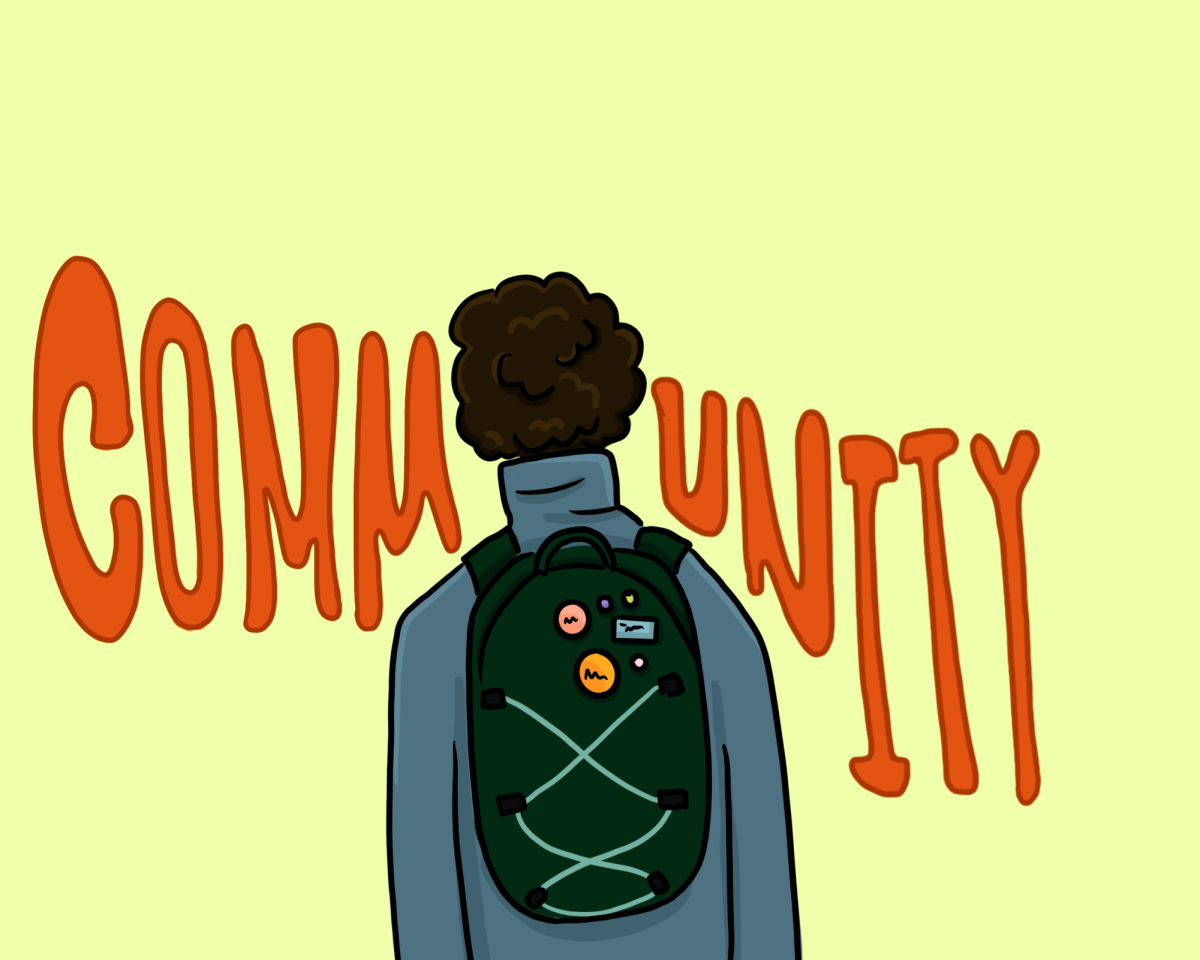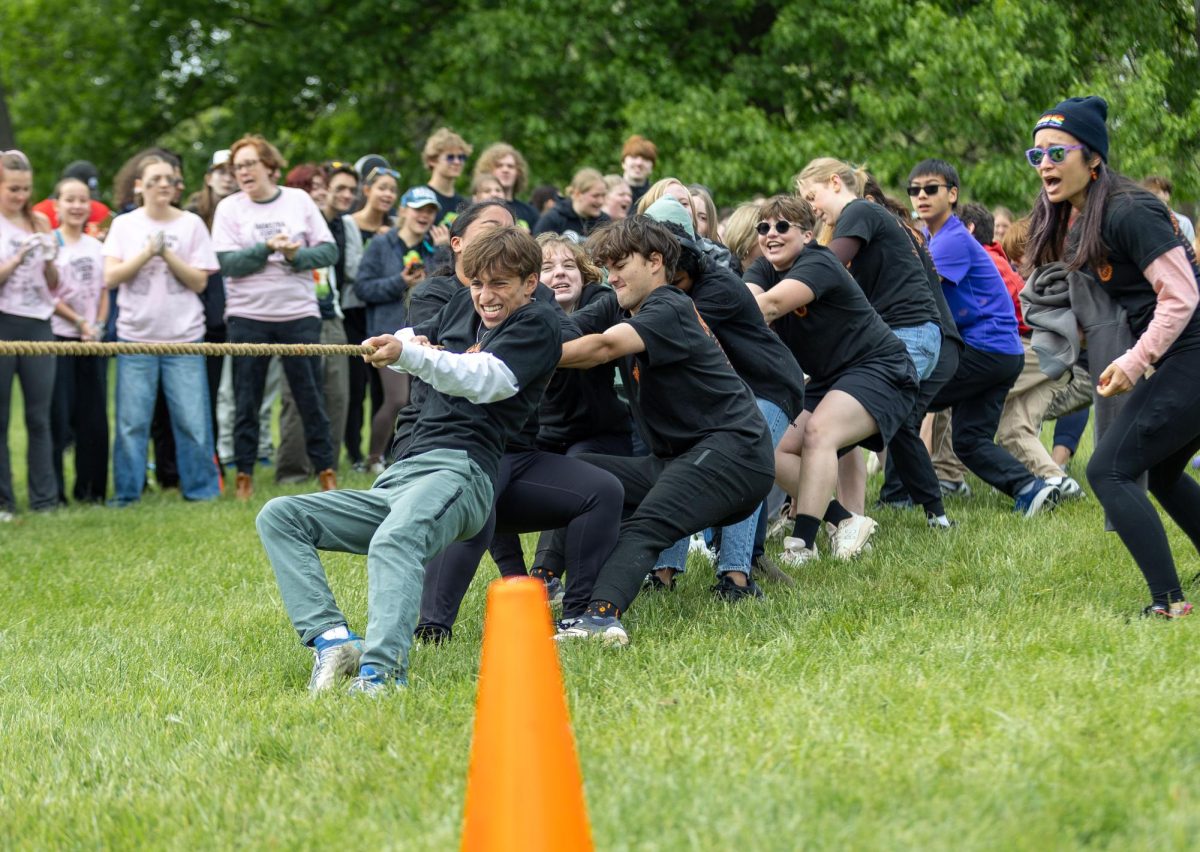It is fairly typical for a high school student to ride to school on a large yellow bus. But the morning routines of senior Jennifer Sercel and junior Elizabeth Caldwell, both Community High School students, vary from the traditional model. Sercel and Caldwell take not one, but two buses each morning in order to get to Community.
Sercel starts her day at 5:10 in the morning so that she can catch the 6:50 school bus to Huron. She then transfers to a shuttle bus to Community, which leaves Huron around 7:20. Caldwell’s morning schedule is similar, though she rides instead to Pioneer and takes the shuttle bus from there.
For both Sercel and Caldwell, this is the only transportation option. They don’t have cars, their parents are not available in the morning to drive them, and the nearest city bus stop is too far. Though two buses may not be the most ideal way to get to school, both girls accept it as part of going to Community.
“It’s better than what it could be,” said Caldwell. “I mean, Community students are really widespread out over the district maps, so there’s no real way to pick us up and just bring us directly to Community. [Taking two buses] is the only way for me to go to Community. I think it’s worth it.”
Because of the wide distribution of Community students, students have had to get creative with their transportation plans. Students frequently utilize city buses, and many walk or ride bikes to school. Others drive to and from Community, but it can get complicated for juniors and sophomores, who are not able to park in the school parking lot.
Some juniors and sophomores, intent on driving, find other places to park their car. Usually this costs money. Junior Kelsey Teribery parks her car in the St. Thomas church parking lot for $60 a month. “It’d be nice if the [Community] parking lot was bigger, so I could park there for free,” she said. But for now, until she has senior parking lot privileges, Teribery considers the St. Thomas lot a good option. “It’s cheaper than parking in the parking structure every day and it’s cheaper than getting a parking structure pass.”
Junior Ian Grosh’s transportation routine is also complicated. He takes the city bus to school in the morning. At the end of the day, when he has to go to Skyline for after-school sports, he walks a sizable distance to the University of Michigan parking lot, where the car he shares with his mom is parked. Grosh’s family pays $500 a year for a UofM parking pass that they all share.
The city bus is another form of transportation that often requires money. All students who live more than a mile and a half away from the school are able to get an Ann Arbor Transit Authority bus pass that allows them to ride for free. However, the bus passes only work between 3 and 4:30. At all other times, students must pay 75 cents to ride.
Hein clarified the reason for the time limit. “The passes are in place to support students who take what are called seventh hour classes at the comprehensive high schools. And so those are for students who take a class later in the day and are not able to access a shuttle or a yellow school bus home.”
Grosh finds it “extremely annoying” that the bus passes don’t work in the morning, but he understands why. “If the money was there, I would say ‘Yeah, they should give more time on the bus passes’ but there’s probably just not enough money to pay for it. I get by.”
There are not currently any plans to change the time limit on the bus passes. Hein explained that accounting for and managing your own transportation is part of being a CHS student. “When you come and enroll at Community High School to be a student, you know going in that transportation isn’t part of the deal.”
The seniors-only parking lot policy, however, might turn out to be more flexible. “We’ve had conversations in the past year and a half that I’ve been [at Community] about offering a certain number of spots to juniors or beginning to think about charging for parking like the other high schools do, but we really haven’t pursued that. [It’s] just been some informal conversation,” said Hein.
Another option for students is biking. Sophomore Kate Summers often rides her bike from her home to Community, and from Community to Pioneer, where she split enrolls. She likes that it’s a way for her to stay active. “Otherwise, I wouldn’t have any time for exercise,” she explained. In the winter, Summers takes the city bus instead.
Junior Zak Arrington bikes to Community as well. “It gets me from A to B,” he said. Even in the winter, Arrington continues to bike. “In the winter, I just try to be careful. Try not to slip up or skid out,” he explained.
Overall, Hein sees it as a positive that Community students have to use so many unique forms of transportation. “I think our kids are very good independent travelers. Almost everybody comes in knowing how to ride a city bus, and I think that’s a very important thing to know how to do, particularly when you get ready to go to a university or you travel around the world. You need to take public transportation and that’s an important skill.”









